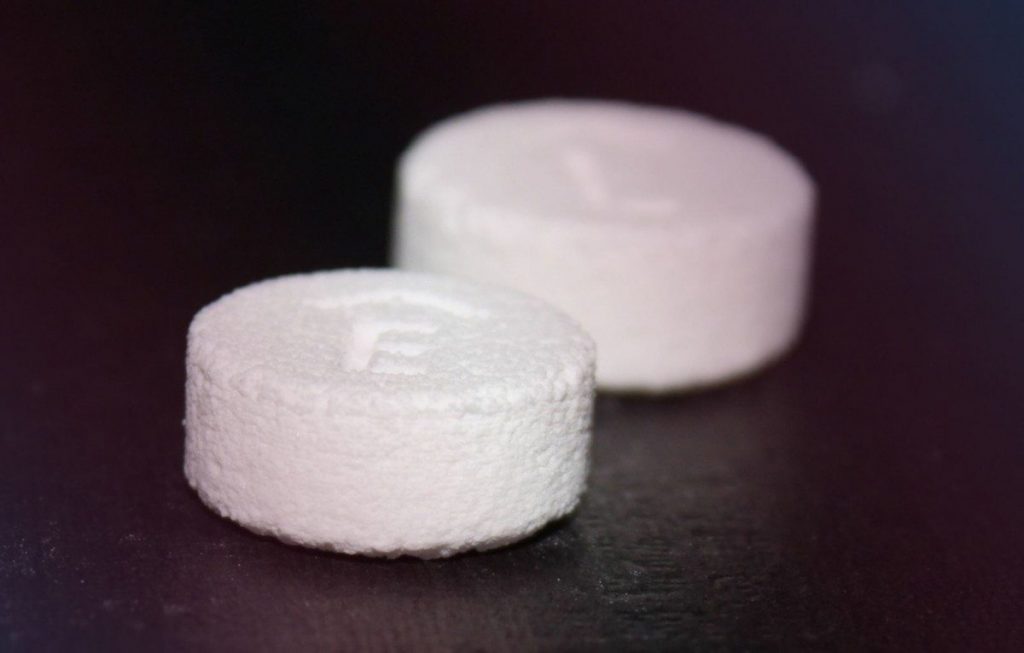Aprecia Pharmaceuticals, the company behind the first and only FDA approved 3D printed drug Spritam, has entered into an agreement with Cycle Pharmaceuticals Ltd. based in Cambridge, UK. The companies will work together using Aprecia’s binder jet 3D printing to produce orphan drugs for treatment of rare medical conditions.
The benefits of 3D printed drugs
Aprecia’s trademark ZipDose process, also known as powder-liquid 3D printing, was first developed at the Massachusetts Institute of Technology (MIT) in the 1980s. It works using a kind of conveyor belt system where polymeric powder, containing the active drug, is laid flat using a roller. A binder is then jetted onto the powder in a desired tablet shape, solidifying the powder where it touches. The conveyor belt moves to repeat this process several times, building the tablets up layer by layer.
The chief advantage of this process is that it makes tablets that are much more porous than those made using conventional methods. This then means that they dissolve, and act, much faster when taken with a sip of water.
Treatment of rare diseases
Spritam is Aprecia’s first 3D printed drug to make it to market, and it is used to treat seizures in people with epilepsy. In the new partnership with Cycle, Aprecia will roll out the technology to fill other deprived niches in the industry.
Antonio Benedetti, CEO of Cycle, explains, “Many rare disease patients do not have a treatment option at all. For those rare diseases where there is an approved pharmaceutical treatment, patients continue to be burdened by sub-optimal drug formulations.”
The ZipDose process also ensures a higher concentration of active pharmaceutical ingredients in fast-melt tablets, and can help overcome swallowing difficulties, often caused by the size of the pill.

Addressing real-world problems
Don Wetherhold, CEO of Aprecia, adds, “We are excited to work with the Cycle team, and we see important synergies in the companies’ shared mission to address unmet needs in patient care,”
“Aprecia is fully committed to applying its ZipDose® 3DP printing technology to address real-world, daily issues faced by rare disease patients.”
Future developments in medicinal 3D printing could also see the addition of liquid centers, and multiple chambers for controlled release of different drugs when they reach affected parts of the body. This, in particular, could be helpful in the treatment of cancer. 3D printing can also be used to add active ingredients to medical implants, and help alleviate inflammation at the source.
Subscribe to the 3D Printing Industry newsletter, like us Facebook and follow us on Twitter for stories on 3D printing legislature, medicine and more.
Nominate medical innovation now in the 2018 3D Printing Industry Awards.
Featured image shows Aprecia 3D printed pills. Photo via Aprecia Pharmaceuticals


